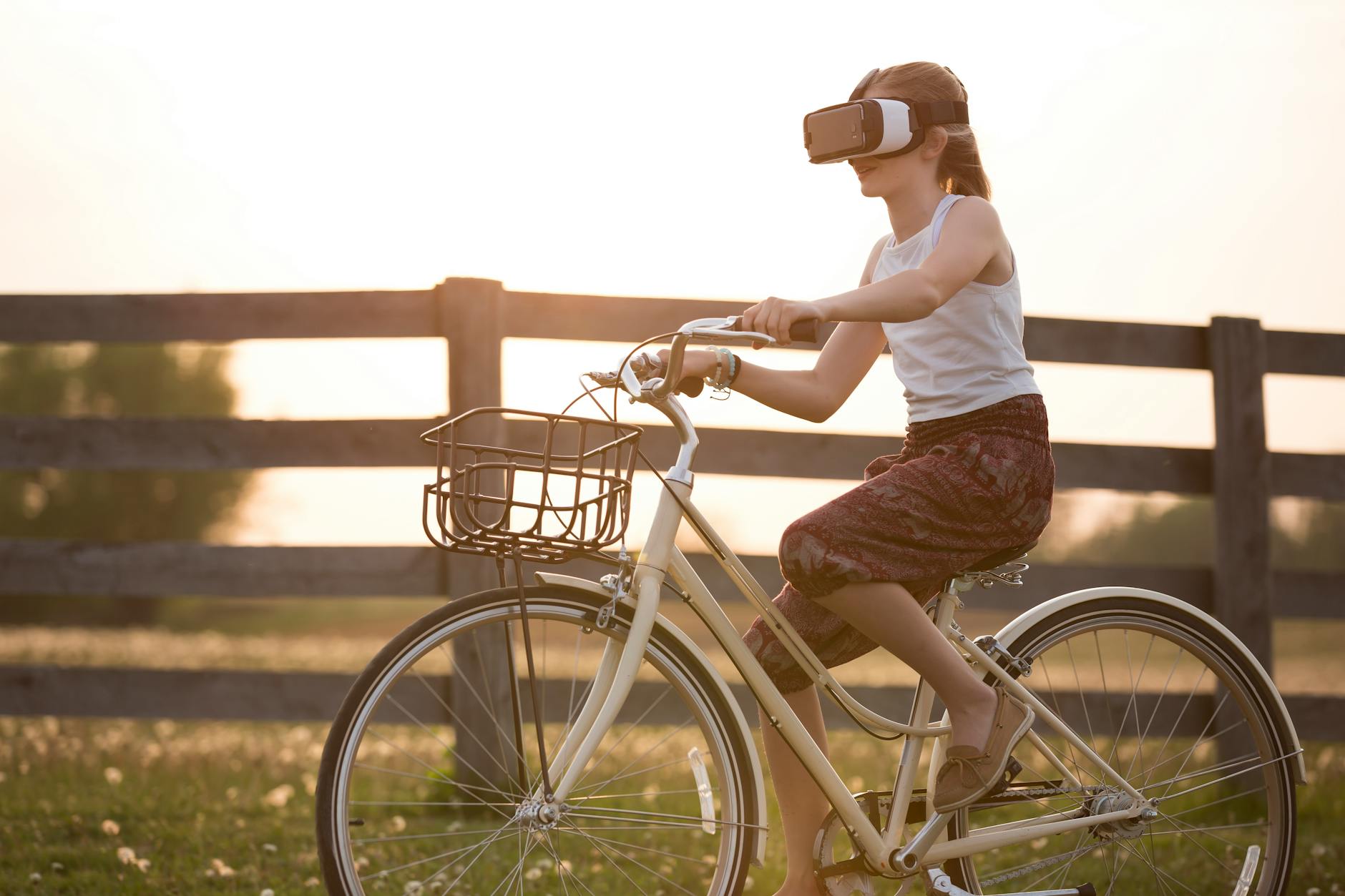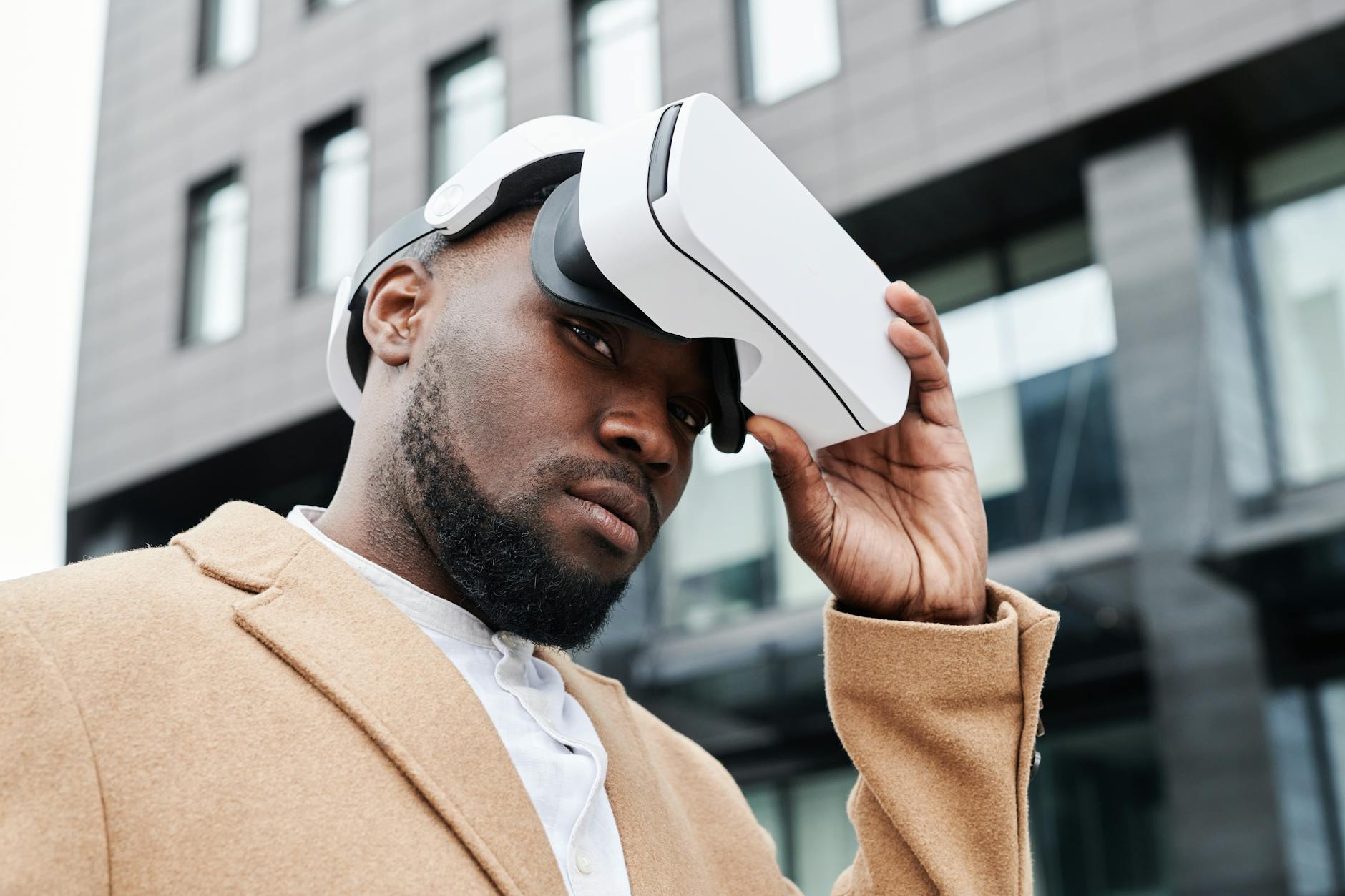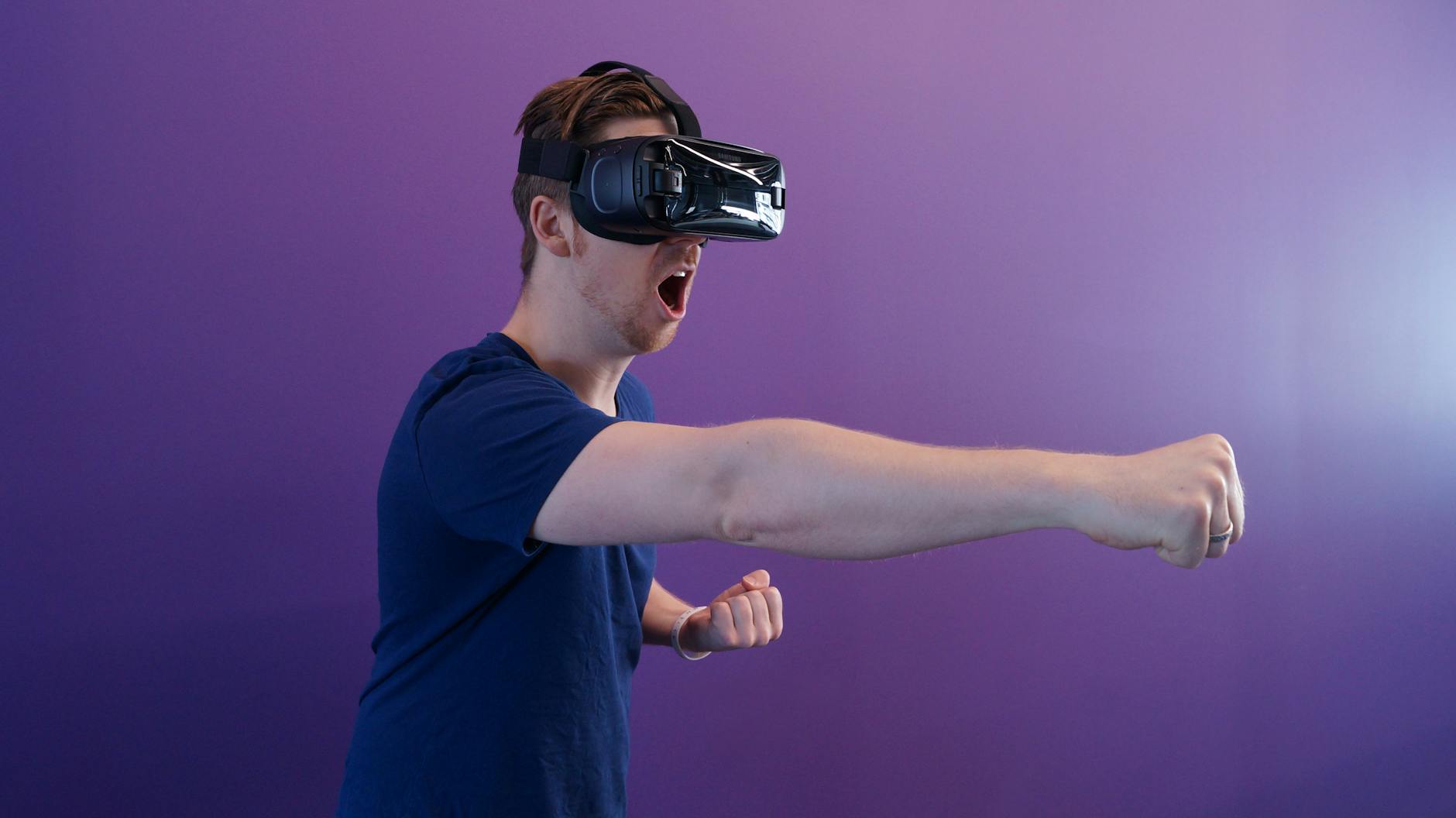
🚀 Virtual reality is no longer just a sci-fi fantasy – it’s revolutionizing our world as we speak! From healthcare to tourism, this groundbreaking technology is reshaping industries and transforming the way we live, work, and play. But are you keeping up with the lightning-fast pace of VR innovation?
Imagine stepping into a virtual operating room to practice life-saving surgeries, or touring your dream home before it’s even built. These scenarios aren’t just possible – they’re happening right now. As VR technology continues to evolve at breakneck speed, businesses and professionals who fail to adapt risk being left behind. Don’t let that be you!
In this eye-opening blog post, we’ll explore the seven industries that are being dramatically transformed by virtual reality. From revolutionizing healthcare to reinventing tourism, you’ll discover how VR is pushing boundaries and creating exciting new opportunities. Are you ready to dive into the virtual future? Let’s explore the game-changing impact of VR across these diverse sectors!

Healthcare Revolution
Virtual reality (VR) is revolutionizing the healthcare industry, offering innovative solutions that enhance patient care, medical education, and treatment options. Let’s explore how VR is transforming various aspects of healthcare.
A. Enhanced Surgical Training
VR technology is providing surgeons with immersive, risk-free environments to practice complex procedures. This advancement in surgical training offers several benefits:
- Realistic simulations of rare and high-risk surgeries
- Ability to repeat procedures without patient risk
- Real-time feedback and performance analysis
| Traditional Training | VR-Enhanced Training |
|---|---|
| Limited hands-on practice | Unlimited virtual practice |
| Risk to patients | Zero patient risk |
| Costly resources | Cost-effective simulations |
B. Medical Education Advancements
Medical students and professionals are benefiting from VR-based learning experiences:
- Interactive 3D models of human anatomy
- Simulated patient interactions for improved bedside manner
- Virtual laboratory experiments and dissections
C. Pain Management and Therapy
VR is proving to be an effective tool in pain management and various therapeutic applications:
- Distraction therapy for chronic pain patients
- Virtual environments for exposure therapy in treating phobias and PTSD
- Rehabilitation exercises for stroke and injury recovery
D. Remote Patient Care
Telemedicine is being enhanced through VR technology, allowing for:
- Virtual consultations with realistic doctor-patient interactions
- Remote monitoring of patients in real-time
- Collaborative diagnosis and treatment planning among healthcare professionals
As we’ve seen, VR is significantly impacting healthcare delivery and education. Next, we’ll explore how this transformative technology is reshaping the gaming and entertainment industry.

Gaming and Entertainment Transformation
The gaming and entertainment industry has been at the forefront of virtual reality adoption, revolutionizing how we experience digital content. This transformation is reshaping the landscape across multiple sectors within the industry.
A. Live Event Streaming in VR
Virtual reality has opened up new possibilities for live event streaming, allowing viewers to feel as if they’re actually present at concerts, sports events, and conferences. Here’s how VR is changing the live event experience:
- 360-degree views of the event
- Interactive elements for audience engagement
- Virtual meet-and-greets with performers or athletes
- Customizable viewing angles and perspectives
B. Interactive Storytelling
VR technology is enabling storytellers to create immersive narratives that blur the line between observer and participant. This new form of storytelling offers:
- Choose-your-own-adventure experiences
- Multi-sensory engagement (visual, auditory, and haptic feedback)
- Real-time character interactions
- Exploration of story environments
C. Virtual Theme Parks
Theme park experiences are no longer limited by physical space or safety constraints. Virtual reality theme parks provide:
| Traditional Theme Parks | Virtual Reality Theme Parks |
|---|---|
| Limited by physical space | Unlimited virtual environments |
| High maintenance costs | Lower operational expenses |
| Safety concerns for extreme rides | Safe, yet thrilling experiences |
| Long queues and wait times | Instant access to attractions |
D. Immersive Gaming Experiences
Virtual reality gaming is perhaps the most transformative application in this industry. It offers:
- Full-body tracking and motion controls
- Realistic physics and environmental interactions
- Multiplayer VR environments for social gaming
- Integration with haptic feedback suits for enhanced realism
As we explore these advancements in gaming and entertainment, it’s clear that virtual reality is not just enhancing existing experiences but creating entirely new forms of engagement. This technology is paving the way for more interactive, immersive, and personalized entertainment options that were once thought impossible.

Education and Training Innovations
Virtual reality is revolutionizing the education and training sector, offering immersive experiences that enhance learning outcomes across various disciplines. Let’s explore how VR is transforming this industry:
A. Special Needs Education Support
VR technology is providing unprecedented support for students with special needs:
- Customized learning environments
- Sensory-friendly experiences
- Safe spaces for practicing social skills
| Benefit | Description |
|---|---|
| Personalization | Tailored experiences for individual needs |
| Engagement | Increased motivation through interactive content |
| Safety | Risk-free environment for skill development |
B. Historical and Cultural Immersion
Virtual reality brings history and culture to life:
- Virtual field trips to historical sites
- Immersive cultural experiences
- Interactive historical reenactments
C. Skill-based Training Simulations
VR offers realistic simulations for practical skill development:
- Medical procedures training
- Emergency response scenarios
- Technical skills practice for various industries
D. Virtual Classrooms
The concept of traditional classrooms is being redefined through VR:
- Global collaboration opportunities
- Enhanced visual learning aids
- Immersive subject-specific environments
Virtual reality in education is not just enhancing learning experiences but also making education more accessible and engaging for learners of all abilities. As we move forward, we’ll see how VR is revolutionizing the manufacturing and engineering sectors, bringing new dimensions to product design and production processes.

Real Estate and Architecture Advancements
Virtual reality is revolutionizing the real estate and architecture industries, offering innovative solutions that enhance visualization, planning, and customer experience. Let’s explore how VR is transforming these sectors.
Architectural Visualization
Virtual reality has become an indispensable tool for architects and designers, allowing them to create immersive 3D models of buildings and spaces. This technology enables:
- Realistic walkthroughs of unbuilt structures
- Detailed examination of design elements
- Collaborative design reviews with clients and stakeholders
| Benefits of VR in Architectural Visualization |
|---|
| Enhanced spatial understanding |
| Improved client communication |
| Faster design iterations |
| Cost-effective prototyping |
Interior Design Planning
VR is reshaping the way interior designers work, offering a platform to experiment with different layouts, color schemes, and furnishings. Key advantages include:
- Virtual staging of properties
- Interactive furniture placement
- Real-time customization of design elements
Virtual Property Tours
One of the most significant impacts of VR in real estate is the ability to conduct virtual property tours. This technology offers:
- 24/7 access to property viewings
- Reduced time and travel costs for buyers and agents
- Increased reach to out-of-town or international buyers
- Ability to showcase properties still under construction
By leveraging virtual reality in real estate and architecture, professionals can streamline processes, enhance client experiences, and push the boundaries of design and visualization. As we move forward, we’ll explore how VR is making waves in the manufacturing and engineering sectors, revolutionizing production processes and design capabilities.

Manufacturing and Engineering Breakthroughs
Virtual reality (VR) is revolutionizing the manufacturing and engineering sectors, offering innovative solutions that enhance efficiency, safety, and productivity. Let’s explore the key areas where VR is making significant impacts.
Remote Collaboration Tools
VR technology is transforming how engineering teams collaborate across distances. With VR-enabled remote collaboration tools, engineers can:
- Conduct virtual design reviews
- Share 3D models in real-time
- Simulate assembly processes
These capabilities significantly reduce travel costs and accelerate project timelines.
Quality Control Enhancements
VR is enhancing quality control processes in manufacturing by:
- Enabling virtual inspections of products
- Simulating stress tests on virtual prototypes
- Identifying potential defects before physical production
| Traditional QC | VR-Enhanced QC |
|---|---|
| Physical inspections | Virtual inspections |
| Limited stress testing | Comprehensive virtual stress tests |
| Post-production defect detection | Pre-production defect identification |
Assembly Line Training
VR-based training programs are revolutionizing assembly line operations:
- Immersive learning environments
- Risk-free practice scenarios
- Real-time performance feedback
- Customizable training modules
These VR training solutions reduce training costs, improve worker safety, and increase overall productivity.
Product Design and Prototyping
VR is streamlining the product design and prototyping process by:
- Allowing designers to create and manipulate 3D models in virtual space
- Enabling rapid iteration and testing of design concepts
- Facilitating collaborative design reviews with stakeholders
This approach significantly reduces time-to-market and development costs for new products.
With these advancements, VR is proving to be a game-changer in manufacturing and engineering. Next, we’ll explore how virtual reality is reshaping the retail and e-commerce landscape.

Retail and E-commerce Evolution
The retail and e-commerce sectors are experiencing a profound transformation through virtual reality technology. VR is revolutionizing the way consumers shop and interact with products, offering immersive experiences that bridge the gap between online and in-store shopping.
A. Personalized Shopping Assistants
Virtual reality is enabling the creation of AI-powered shopping assistants that provide personalized recommendations and guidance. These assistants can:
- Analyze customer preferences and purchase history
- Offer tailored product suggestions
- Guide customers through virtual stores
| Feature | Benefit |
|---|---|
| Real-time interaction | Immediate assistance and answers to questions |
| Avatar customization | Enhanced user engagement and relatability |
| Product demonstrations | Better understanding of product features and uses |
B. Try-Before-You-Buy Experiences
One of the most significant advantages of VR in retail is the ability to virtually try products before purchasing. This feature:
- Reduces return rates
- Increases customer satisfaction
- Enhances the online shopping experience
C. Virtual Showrooms
Virtual showrooms are transforming how brands showcase their products, offering:
- 360-degree product views
- Customizable environments
- Interactive product demonstrations
These immersive spaces allow customers to explore products in detail, compare options, and make informed decisions from the comfort of their homes.
As we move forward, the integration of VR in retail and e-commerce is set to redefine the shopping experience, blending the convenience of online shopping with the tangibility of in-store visits. This evolution is paving the way for more engaging and efficient ways to discover, evaluate, and purchase products in the digital age.

Tourism and Hospitality Reinvention
Virtual reality is revolutionizing the tourism and hospitality industry, offering immersive experiences that were once unimaginable. This transformative technology is reshaping how we explore, plan, and enjoy our travels.
A. Cultural Heritage Preservation
VR technology is playing a crucial role in preserving and showcasing cultural heritage sites. It allows visitors to:
- Experience historical landmarks in their original glory
- Explore fragile or restricted areas without causing damage
- Witness reconstructions of ancient civilizations
B. Interactive City Tours
Virtual reality is transforming city tours, making them more engaging and accessible:
- 360-degree virtual tours of popular destinations
- Guided VR experiences with local experts
- Customizable itineraries based on personal interests
C. Hotel Room Previews
VR is enhancing the hotel booking experience by offering:
| Feature | Benefit |
|---|---|
| Virtual room tours | Accurate representation of accommodations |
| Amenity showcases | Clear view of hotel facilities |
| Surrounding area exploration | Better understanding of hotel location |
D. Virtual Travel Experiences
For those unable to travel physically, VR provides:
- Immersive experiences of distant locations
- Virtual attendance at global events and festivals
- Exploration of extreme environments (e.g., deep sea, space)
As we explore these innovative applications, it’s clear that VR is not just enhancing tourism but also making it more inclusive and sustainable. Next, we’ll delve into how this technology is transforming other aspects of our lives and industries.

Virtual Reality is no longer a futuristic concept but a present-day reality that’s reshaping multiple industries. From revolutionizing healthcare practices to transforming entertainment experiences, VR is making significant strides across various sectors. Its impact on education, real estate, manufacturing, retail, and tourism is equally profound, offering innovative solutions and enhancing user experiences in ways previously unimaginable.
As VR technology continues to evolve and become more accessible, its potential to transform industries will only grow. Businesses and professionals across all sectors should consider how they can leverage this powerful tool to stay competitive and innovative. Whether it’s improving patient care, offering immersive learning experiences, or creating virtual showrooms, VR presents endless possibilities for growth and advancement in our rapidly changing digital landscape.






I conceive this web site has some rattling wonderful info for everyone. “Only the little people pay taxes.” by Leona Helmsly.
Thank you for sharing your thoughts! We’re thrilled that you find the information on this website valuable and engaging. Leona Helmsley’s quote is certainly thought-provoking and reflects a unique perspective. We strive to provide content that sparks curiosity and resonates with everyone. Stay connected for more insightful updates!
Thank you for sharing your thoughts! We’re delighted to hear that you find the content on this website valuable and engaging. Leona Helmsley’s quote is certainly an intriguing perspective that sparks conversation. We appreciate your visit and look forward to continuing to provide insightful information for everyone. Stay connected!